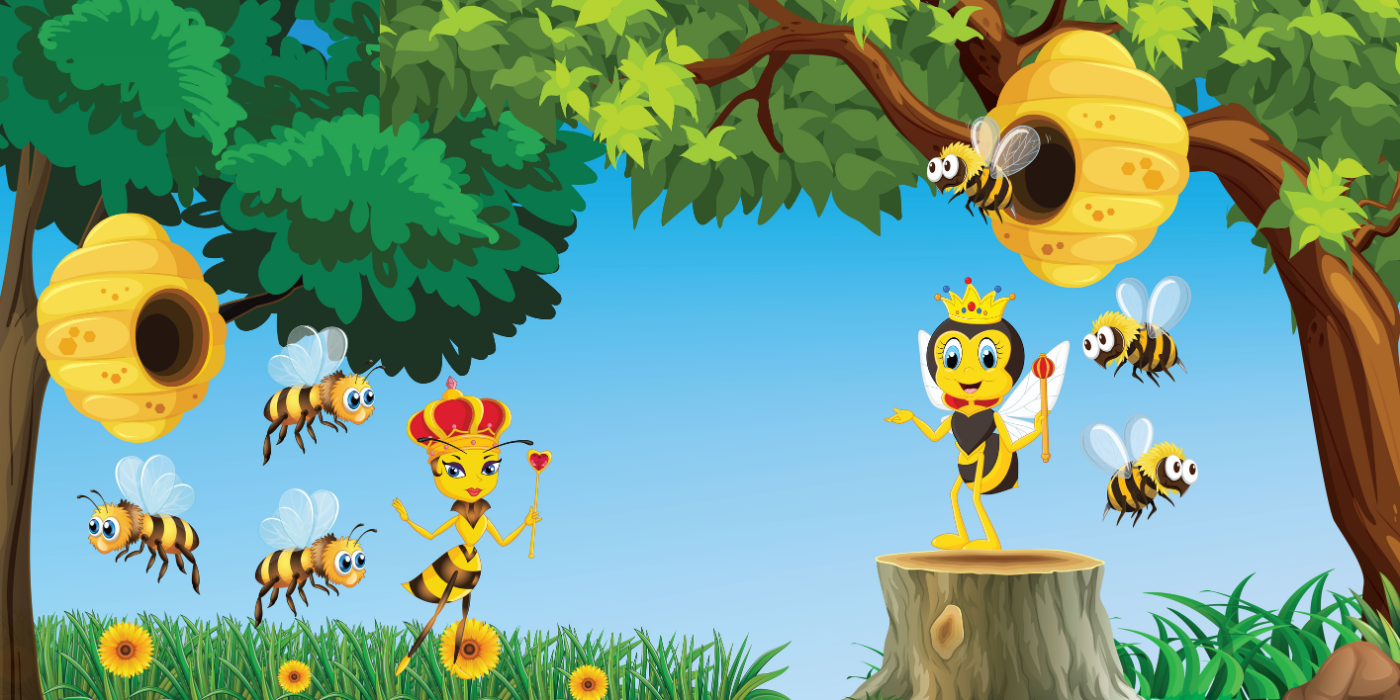
The Art of Artificial Swarm Creation
In the realm of beekeeping, a dance of balance and artistry unfolds—a delicate choreography that harnesses the essence of nature while honoring the intricate lives of bees. One such masterpiece within this domain is the art of artificial swarm creation, a practice that embodies both science and finesse.
Understanding the Swarm
Before we immerse ourselves in the artistry of artificial swarm creation, let's grasp the concept of a swarm. Picture a hive thriving with activity, bustling with worker bees attending to their queen and diligently nurturing brood. As a colony grows and space becomes limited, the colony may naturally divide, leading to the formation of a swarm—a spectacle where a part of the colony, including the queen, leaves to establish a new beehive.
- The Craftsmanship of Artificial Swarms
Artificial swarm creation, a technique honed by beekeepers, mimics this natural process but under controlled conditions. It involves the careful separation of a colony into multiple units, each possessing the components necessary for a thriving hive: a queen, worker bees, and adequate resources.
This practice demands a deep understanding of bee behavior, timing, and hive dynamics. Beekeepers aim to replicate the conditions that prompt a natural swarm while ensuring the health and viability of the newly formed colonies.
- The Methodology
There are various methods to create artificial swarms, each with its own intricacies and purposes. One common technique involves the identification of a strong colony and the controlled transfer of a portion of its bees, along with a new queen or queen cell, into a prepared hive.
Another method utilizes the division of frames containing brood, pollen, and honey resources, carefully distributing these elements among multiple hives to stimulate the formation of new colonies. These methods often require precision and timing, synchronizing with the natural rhythms of the bees' life cycle.
- The Art and Science Merge
The craft of artificial swarm creation isn't solely about mechanical manipulation; it's an amalgamation of art and science. It's about understanding the bees' instincts and natural tendencies, leveraging this knowledge to nurture healthy, robust colonies.
Beekeepers must possess a keen eye for observation, interpreting subtle cues from the hive—an increase in worker bees, queen bees cells, or a sense of overcrowding—to determine the opportune moment for swarm creation. This artistry extends beyond technique; it involves intuition and a deep connection with the bees.
- Balancing Act: Benefits and Challenges
The benefits of artificial swarm creation are manifold. It allows beekeepers to manage hive population, prevent natural swarming, increase colony numbers, and rejuvenate aging hives. Moreover, it aids in controlling diseases and pests by creating new, healthier colonies.
However, this artistry isn’t without its challenges. Timing is critical; a misstep could lead to the loss of valuable resources or weaken colonies. Additionally, ensuring that each new unit has ample resources and a mated queen is crucial for their survival and prosperity.
- Harvesting Wisdom
Aspiring beekeepers seeking to master this craft must embrace the artistry inherent in beekeeping. Learning from experienced mentors, understanding hive dynamics, and practicing patience and precision are vital. This art demands a continuous cycle of learning and adaptation.
- A Tapestry of Mastery
In the world of beekeeping, artificial swarm creation is a testament to the intricate tapestry woven by human understanding and nature's complexity. It’s a harmony of knowledge, instinct, and finesse—a craft that marries the art of observation with the science of bee behavior.
Every artificial swarm crafted by a beekeeper embodies not just the splitting of a colony, but a dedication to nurturing new life and sustaining the marvels of the hive. It's an art form that resonates with the rhythms of nature and reflects the awe-inspiring intricacies of bee society.
Conclusion
The art of artificial swarm creation in beekeeping isn’t merely a technique; it’s a testament to the profound connection between human stewardship and the thriving world of bees—a symphony that celebrates the wonder of nature's design.
General Question About Artificial Swarm Creation
What is the purpose of creating artificial swarms in beekeeping?
Artificial swarms help manage hive populations, prevent natural swarming, increase colony numbers, rejuvenate aging hives, and control diseases and pests by creating new, healthier colonies.
What are the basic steps involved in creating an artificial swarm?
The basic steps include identifying a strong colony, transferring a portion of its bees along with a new queen or queen cell into a prepared hive, and distributing frames with brood, pollen, and honey resources among multiple hives.
How does a beekeeper know when to create an artificial swarm?
Beekeepers look for signs such as an increase in worker bees, the presence of queen cells, and a sense of overcrowding in the hive to determine the opportune moment for creating an artificial swarm.
How can aspiring beekeepers learn to master artificial swarm creation?
Aspiring beekeepers should learn from experienced mentors, understand hive dynamics, and practice patience and precision. Continuous learning and adaptation are vital for mastering this craft.



Leave a comment